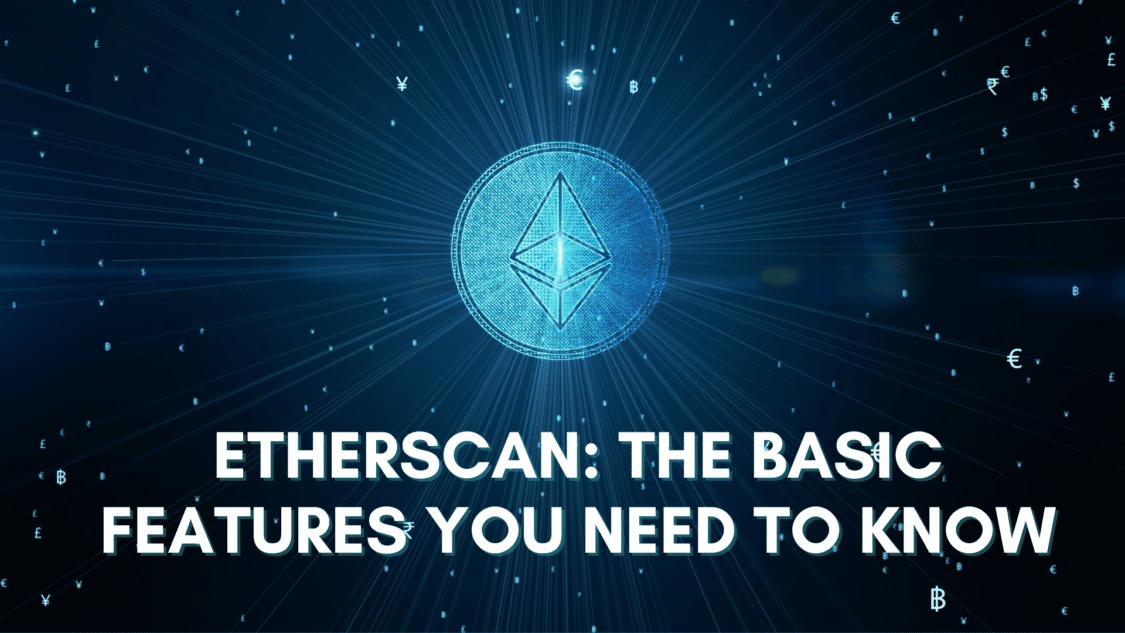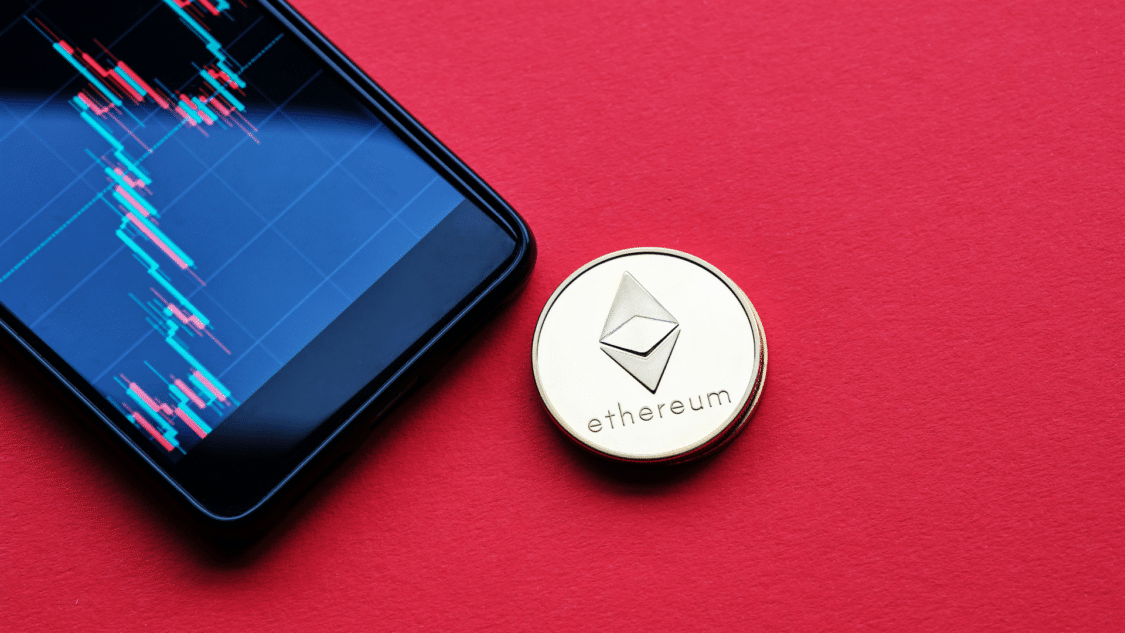Etherscan is an explorer giving you access to the public data on transactions, smart contracts, addresses, and more on the Ethereum blockchain. Interactions on Ethereum are public; however, it gives you access to them through a search engine. You can view all related activity using a transaction ID, such as tokens, smart contracts, and wallet addresses. An account is not necessary for using Etherscan but can provide you with more in-depth system use. It doesn’t provide you with a wallet and cannot be used for trading. It is simply a source of information and a database of smart contracts.

Why should you use Etherscan?
Etherscan has become one of the most popular block explorers for Ethereum. Learning to use it fully can help you detect suspicious blockchain activity. Whale alerts can notify you if large amounts of crypto have been moved onto an exchange. In addition, you can see what the founders of a certain project are doing with their token, giving you information to decipher right from wrong. Whether it is a scam or if developers are abandoning their projects and selling their coins, known as a rug pull.
Etherscan is a powerful tool for anyone involved in the Ethereum ecosystem. Here are some reasons to consider it.
- Verify Transactions: It allows you to verify transactions on the Ethereum blockchain. You can view the details of a transaction, including the sender, receiver, amount, gas fee, and timestamp. This feature can help you detect fraudulent transactions and protect yourself from scams.
- Track Addresses: You can track any Ethereum address using Etherscan. This feature allows a trader to see the transaction history of an address and monitor its activity. Alerts can be set up to detect when an address makes a transaction, which enables you to stay on top of various important activities.
- Checking Smart Contracts: It provides a wide view of smart contracts on the Ethereum blockchain. You can view the source code, ABI (Application Binary Interface), and contract addresses.
- Whale Alerts: Whale alerts notify you when big amounts of cryptocurrency are moved to the blockchain. This feature can help you stay informed about the movements of big players in the market.
- Token Information: All the information on ERC-20 tokens can be viewed on Etherscan, such as the total supply, circulating supply, and token holders.
- Network Statistics: Etherscan provides real-time statistics about the Ethereum network, such as the number of transactions, gas price, and block time. This information can aid in understanding the current state of the network.
Altogether, it is a valuable tool for anyone in the Ethereum ecosystem. It provides broad information about transactions, smart contracts, tokens, and the network. Using Etherscan can help you detect fake activity and, of course, help you make smart decisions.
What are its basic features?

A basic feature Etherscan offers is the tracking of transactions. Understanding how to follow your crypto is the key to unlocking the rest of blockchain information. It’s a good project to learn how to identify smart contracts on it if you’re regularly working with them in DApps. You can double-check that you’re transferring money to the right contract. You’ll need to know the token’s contract address if you ever need to add a new token to your wallet.
Gas prices are in Ethereum’s transaction fees. The fees vary depending on the block the traction is in. Each block has a fee and differs depending on the network traffic. The gas tracker included in Etherscan shows the difference in prices at different times and gas prices.
- Block Explorer: It provides a user-friendly interface to explore and search for blocks, transactions, and addresses on the Ether blockchain.
- Wallet Management: Users have the freedom to manage their wallets on Etherscan, allowing them to send and receive ETH and ERC-20 tokens.
- Contract Verification: Users can use it to validate the smart contract source code on the Ethereum network.
- Analytics and Charts: It provides various analytical tools and charts which enable users to track moves on the network.
- Token Tracker: It has a built-in token tracker that allows users to view information about ERC-20 tokens, such as their total supply, circulating supply, and token holders.
- API Access: With the use of Etherscan’s API, programmers can create applications, such as tracking and monitoring tools, that run on the Ethereum blockchain.
- ENS Lookup: It provides a tool for looking up Ethereum Name Service (ENS) domains, allowing users to register human-readable domain names for their Ethereum addresses.
These are just some of the basic features of Etherscan. The platform also offers developers and power users many advanced tools and features.
Who can benefit from using Etherscan?
Blockchain developers can benefit from Etherscan’s API. This gives them an easy way to build applications on the Ethereum blockchain. The uses of Etherscan for developers range from being able to monitor transactions to building decentralized applications and having access to blockchain data.
Crypto traders can use it to track their transactions and view real-time market data, like price movements and trading volumes. They can also monitor gas fees to ensure their transactions are processed quickly and cost-effectively.
Etherscan’s token tracker enables investors to view information about ERC-20 tokens, such as total supply, circulating supply, and token holders. Anyone who uses Ethereum can also benefit from its tools and features, including the ability to view transactions, check wallet balances, and monitor gas fees. Etherscan can also be used to verify the source code of smart contracts, ensuring that they are secure and trustworthy.
Its transparency and accessibility make it a valuable tool for regulators and auditors to benefit from as they need to monitor blockchain activity. They can use Etherscan to view transactions and track the movement of funds, helping them to identify suspicious activity and enforce compliance.
How can users protect their privacy when using Etherscan?
Various steps can be implemented to protect your privacy when using Etherscan.
To prevent others from tracking your transactions, you can use a different address for each transaction. The solution is creating various wallets or simply using an HD wallet that automatically provides new addresses for each transaction.
By default, Etherscan sends email notifications for each transaction from an address you are watching. These notifications can be turned off to prevent others from knowing when you make transactions.
Users can use a VPN or Tor to hide their IP address and location.
Users can also use a mixer or Tumbler service to break the link between their addresses and transactions. These services mix users’ coins with those of other users, making it harder to trace the source of coins.
Ethereum has introduced private transactions through the use of zero-knowledge proofs. This feature can make their transactions private and untraceable.
These steps can help protect users’ privacy, but they may also have some downsides, such as increased transaction fees or reduced transparency. Users should weigh each option’s potential benefits and drawbacks and choose the one that best fits their needs.
What are the limitations of Etherscan?
One area for improvement is that Etherscan is primarily focused on the Ethereum blockchain, which may limit users looking to explore different blockchains. While Etherscan has expanded to support other chains, its features may not be as broad as they are for Ethereum. Another limitation is that Etherscan allows anyone to view and track transactions on the Ethereum blockchain, which can turn up a privacy concern for some.
In addition, Etherscan’s data is not always up-to-date or real-time, as it relies on miners to add new transactions to the blockchain. This may be an issue for most users, but it can be a limitation for those who require the most current data. Etherscan may also be less beneficial for users looking to perform advanced technical analysis, as only certain technical analysis tools are available. Users looking for more advanced tools may need to use other platforms or software.
Finally, as a free platform, it may offer a different level of customer support than paid platforms. While Etherscan does provide documentation and forums to help users troubleshoot issues, users may need to rely on community support or third-party resources for more advanced support.
Conclusion:

In conclusion, Etherscan is a powerful tool that provides users with various features. It offers a wealth of information on the Ethereum blockchain, from tracking transactions to analyzing smart contracts. Etherscan is user-friendly, even for those with limited knowledge of blockchain technology. Its intuitive user interface and comprehensive documentation make it a great place to start exploring the Ethereum ecosystem.
Additionally, Etherscan has played a significant role in the growth and development of the Ethereum community in many ways. Its platform has helped businesses and developers to build DApps and facilitate transactions on the blockchain. It has also widely contributed to the transparency and accountability of the Ethereum network by enabling users to view and verify transactions.
Moreover, Etherscan’s open-source nature has allowed for the creation of other blockchain explorers on its foundation. This has enabled users to easily transfer their knowledge and skills between different blockchain platforms, further promoting blockchain technology’s adoption and growth.
Etherscan is a valuable resource for anyone interested in exploring the Ethereum blockchain. Its features constantly evolve, and new tools are being added to provide users with even more ways to interact with the Ethereum network. Whether you are a developer, investor, or blockchain enthusiast, Etherscan is an essential tool in your arsenal.




